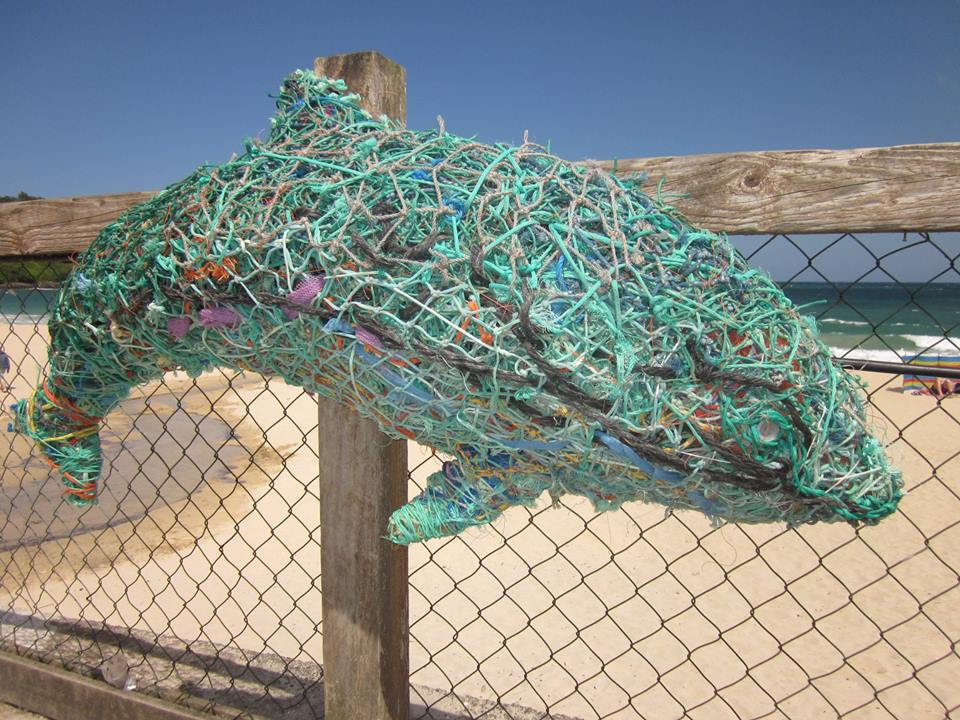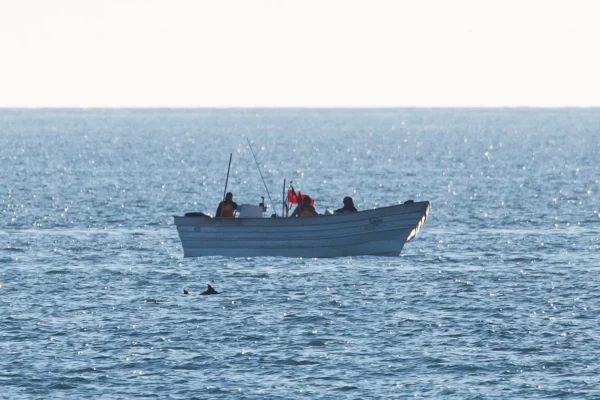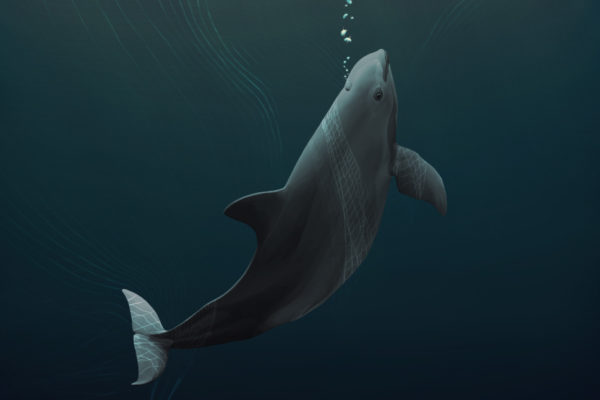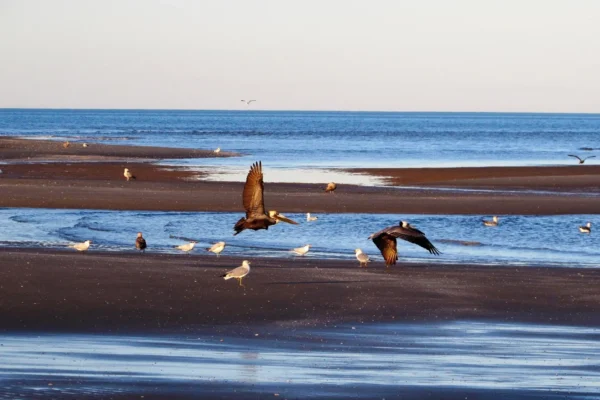
Katrina Slack is an artist based in Cornwall, South West England. She creates marine debris art out of reclaimed ghost fishing gear and recently made one in the shape of a porpoise. Ghost gear is any derelict fishing gear lost or abandoned in the ocean; it continues to trap and kill marine life. Entanglement in fishing gear is one of the biggest threats to many species and is responsible for killing more than 300,000 cetaceans (whales, porpoises and dolphins) every year. Porpoises, because of their small size, are especially vulnerable to these nets.
We recently had the chance to chat with Katrina about her porpoise art piece.
Q: How long have you been creating art?
A: From a very young age I have loved making things. I used to spend hours in my dad’s shed watching him carve and create; I think it rubbed off on me. I did an ‘A’ Level in art but then went on to study sociology and photojournalism in college. It wasn’t until I moved to Cornwall in 2001 that I started to create art from reclaimed materials, in particular plastics collected from the beaches.
Q: What inspired you to use your art to talk about marine debris issues?
A: I have always been an environmentalist. From a very young age I became a vegetarian and got involved in animal rights and environmental issues. During my time living in Cornwall and spending time near the ocean with my young children, I have witnessed a huge amount of debris on the beaches along with stranded marine animals. The debris we see on beaches is just a “drop in the ocean” compared to what is actually out there. It is a tragedy that we are losing so much of our marine life due to our carelessness. Making art from debris seemed a positive way of raising awareness, while also creating an interesting art-form. My first piece was a bottlenose dolphin made out of ghost fishing gear. From this prototype I was commissioned by World Animal Protection to make another dolphin, a seal and a leatherback turtle. All of these species are air breathers, so they are at risk of drowning when they get caught in discarded nets below the surface of the ocean.
Q: Why did you pick a porpoise as your model?
A: Once I had finished the project for World Animal Protection I wanted to make a sculpture of a porpoise because they are my favourite cetacean. I wanted to draw attention to their plight. They are a species that is particularly vulnerable to getting caught it bottom-set gill nets. They are also threatened by pollution and physical disturbance. I also wanted to draw attention to the porpoise because it is our most common cetacean here in Cornwall, but not the most talked about.
Q: Has creating art from marine debris changed the way you look at the ocean?
A: Yes it has. I spent a lot of time looking at the ocean and it is often with sadness, knowing that there are so many plastics, ghost fishing gear, pollutants and other problems out there. It troubles me that the majority of marine animals are struggling for survival against the huge impact of humans. I sometimes look out over the ocean and imagine how it once was full of life. We are losing numerous species every year, including undiscovered species we will never even know we have lost.
Q: What’s next for you?
A: I have always have projects on the go. I also paint and currently have an exhibition at Heartlands called ‘Birds, Landscapes and Lines’. I have been making small sculptures from wire and fishing gear in the shape of birds, foxes and badgers which are being sold in art galleries in St Ives and Porthleven. I also just submitted a project application to T.R.A.I.L – which is a project in Teignmouth, Devon for artists to display artwork made from recycled materials.
Katrina, thanks for sharing the plight of the porpoise through your art. We look forward to seeing where you take your art in the future.


